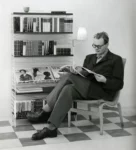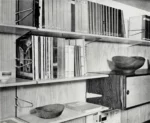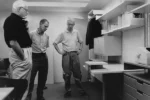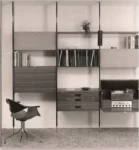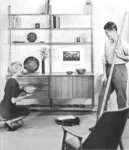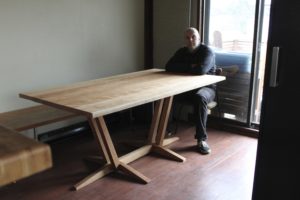About us
Modeller is a bespoke furniture company in Vancouver, British Columbia. They specialize in designing and manufacturing mid-century inspired modular shelves, cabinets, and desks.
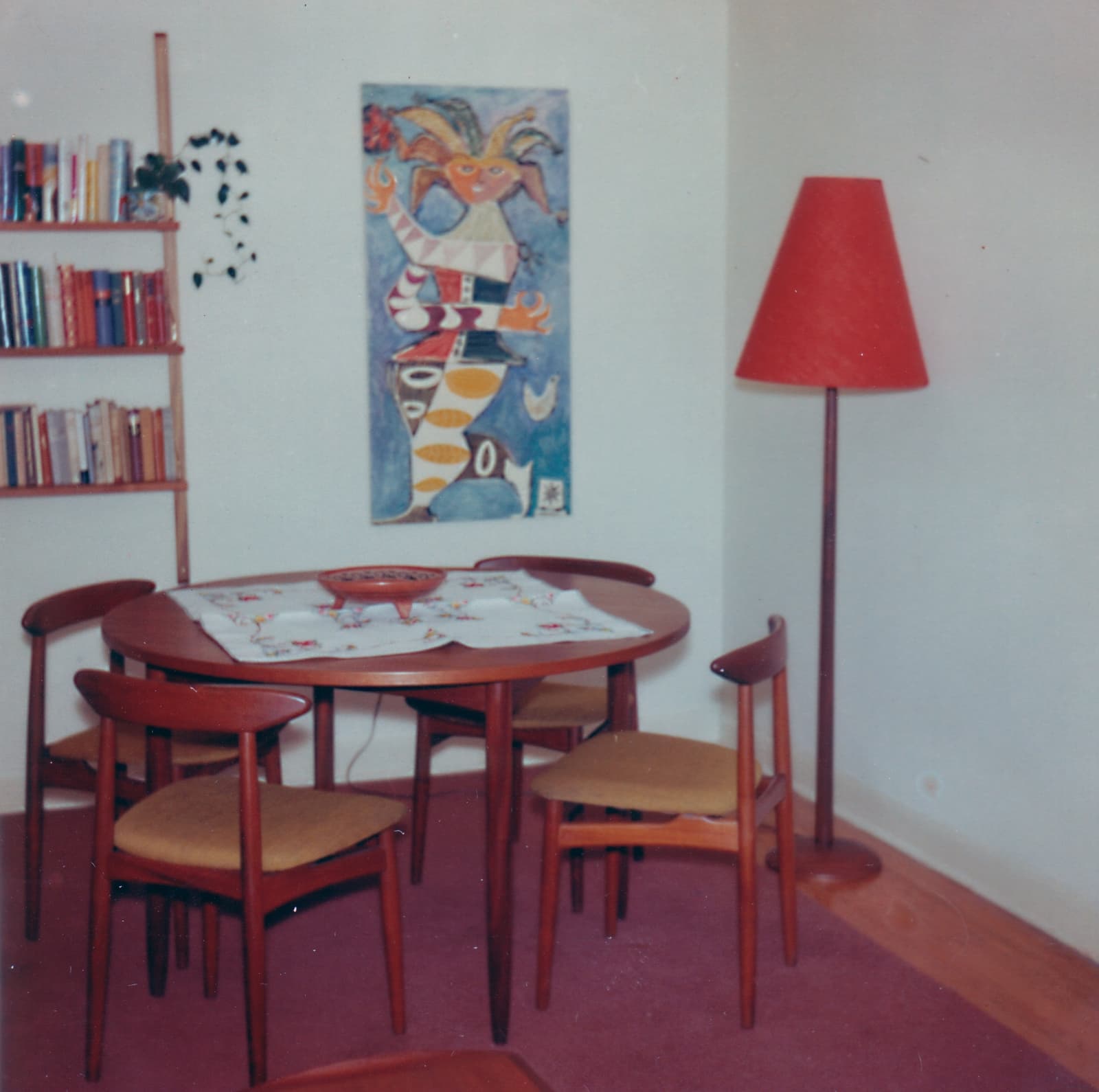
Modular Versatility
Rearrange and Grow with You
All of our components are interchangeable, allowing you to modify your setup to suit your evolving needs and ensure a lifetime of use.
Scandinavian Simplicity
Elegantly Minimalist
Following all of Deiter Rams' ten rules of good design. The modeller system is designed in the Bauhaus tradition of form follows function.
Heirloom Quality
Handmade to Last Generations
Our products are crafted by hand in our East Vancouver studio. We take time assembling each order individually to ensure the highest quality. We only begin production once an order is placed, allowing us to be more flexible and sustainable.
Wall Mounted
Efficiently Space Saving
Floor space is at a premium here in Vancouver, so we developed the modeller system to maximize storage while preserving precious floor space.
Made in Canada
Natural Domestic Materials
Modeller furniture is made with domestic hardwoods and premium hardwood veneer core panels from FSC-certified suppliers. Free from any MDF of VOC, so no sagging or blistering like inferior overseas mass-produced particle board furniture.
The Modeller Furniture System draws inspiration from classic mid-century modern designs. While modern modular shelving systems have evolved continuously, the Modeller furniture system closely resembles a blend of the 606 and Cado.
- Nisse Strinning
Sverige 1940String Shelf
- Finn Juhl
Danmark 1942Bovirke
- Deiter Ram
Deutschland 1959606 Shelving System
- George Nelson
USA 1959CSS Shelving System
- Poul Cadovius
Danmark 1960Cado System
We follow the Japanese principle of “Kaizen” (continuous improvement). All designers build on the work of others to modify and combine. Our design inspiration comes from Frank Lloyd Wright and the Bauhaus School of Design, where “Form Follows Function” is a core principle. We aim to ensure that all our work adheres to the ten principles of good design. We believe that poorly designed things are not just ugly or inconvenient but can also be physically unhealthy.
Dieter Rams introduced the idea of sustainable development and obsolescence being a crime in design in the 1970s. Accordingly, he asked himself, “Is my design a good design?” The answer he formed became the basis for his celebrated work.
Ten Principles of Good Design
- is innovative ( innovativ)– The possibilities for progression are not, by any means, exhausted. Technological development is always offering new opportunities for original designs. But imaginative design always develops in tandem with improving technology, and can never be an end in itself.
- makes a product useful (nützlich)– A product is bought to be used. It has to satisfy not only functional, but also psychological and aesthetic criteria. Good design emphasizes the usefulness of a product whilst disregarding anything that could detract from it.
- is aesthetic (ästhetisch)– The aesthetic quality of a product is integral to its usefulness because products are used every day and have an effect on people and their well-being. Only well-executed objects can be beautiful.
- makes a product understandable (verständlich)– It clarifies the product’s structure. Better still, it can make the product clearly express its function by making use of the user’s intuition. At best, it is self-explanatory.
- is unobtrusive (unaufdringlich)– Products fulfilling a purpose are like tools. They are neither decorative objects nor works of art. Their design should therefore be both neutral and restrained, to leave room for the user’s self-expression.
- is honest (ehrlich)– It does not make a product appear more innovative, powerful or valuable than it really is. It does not attempt to manipulate the consumer with promises that cannot be kept.
- is long-lasting (langlebig)– It avoids being fashionable and therefore never appears antiquated. Unlike fashionable design, it lasts many years – even in today’s throwaway society.
- is thorough down to the last detail (durchdacht)– Nothing must be arbitrary or left to chance. Care and accuracy in the design process show respect towards the consumer.
- is environmentally friendly (umweltfreundlich)– Design makes an important contribution to the preservation of the environment. It conserves resources and minimizes physical and “Visual pollution” throughout the lifecycle of the product.
- is as little design as possible (wenig)– Less, but better. Simple as possible but not simpler. Good design elevates the essential functions of a product.
Domestic Hardwoods
We use domestic hardwood from FSC-certified suppliers. We don’t use any MDF or particle board, so our components are lighter, stronger, and longer-lasting than other shelf systems. Exotic hardwoods like teak are beautiful and wonderful to work with; however, finding ethically sourced lumber is problematic. Our woods of choice are American Black Walnut and White Oak.

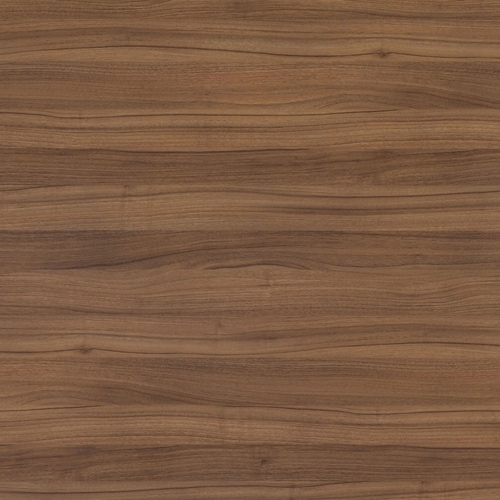
Metal Hardware
We handcraft all of our shelf supports, cabinet supports, bookends, and hooks using solid brass or 6061 aircraft aluminum quarter-inch rods.
Hinges & Drawers Slides
All our hardware is sourced from the best European manufacturers to ensure life-long functionality for generations. Our drawer slides and hinges are Blum soft close and touch-to-open with Italiana hinges and stays for our cabinets.
Wood Finish
Our modeller shelf systems are not just about aesthetics but also functionality and durability. That's why we finish them with a blend of polymerized linseed oil and beeswax. This natural oil finish not only provides excellent protection but also ensures a long-lasting, durable finish with a low-gloss sheen, enhancing the beauty of the wood and maintaining its quality over time.
Early years
Growing up a child of European immigrants, I was surrounded by Scandinavian-designed teak furniture. Like many of my generation, I collected mid-century modern furniture, but it was hard to find and afford, so I started making my own.

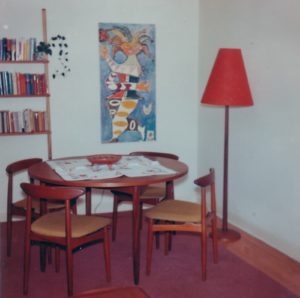
First shelves
In 1992, while working in a North Vancouver wood shop, I made my first set of shelves. The shelves were moved and reconfigured for each place I lived. Interest was always expressed in making more, but making more was only an option with access to a woodshop.
When I finally accumulated enough tools and a place to use them for fine cabinet making, I made an Edo-inspired dining table, one of my most requested pieces.
The Modeller system
I made some shelves and desks for my two young boys using the leftover wood from that table. The shelves had to grow with them, be strong enough to withstand them and be efficient enough to fit in their small room. From this evolved the shelving systems that became modeller.
